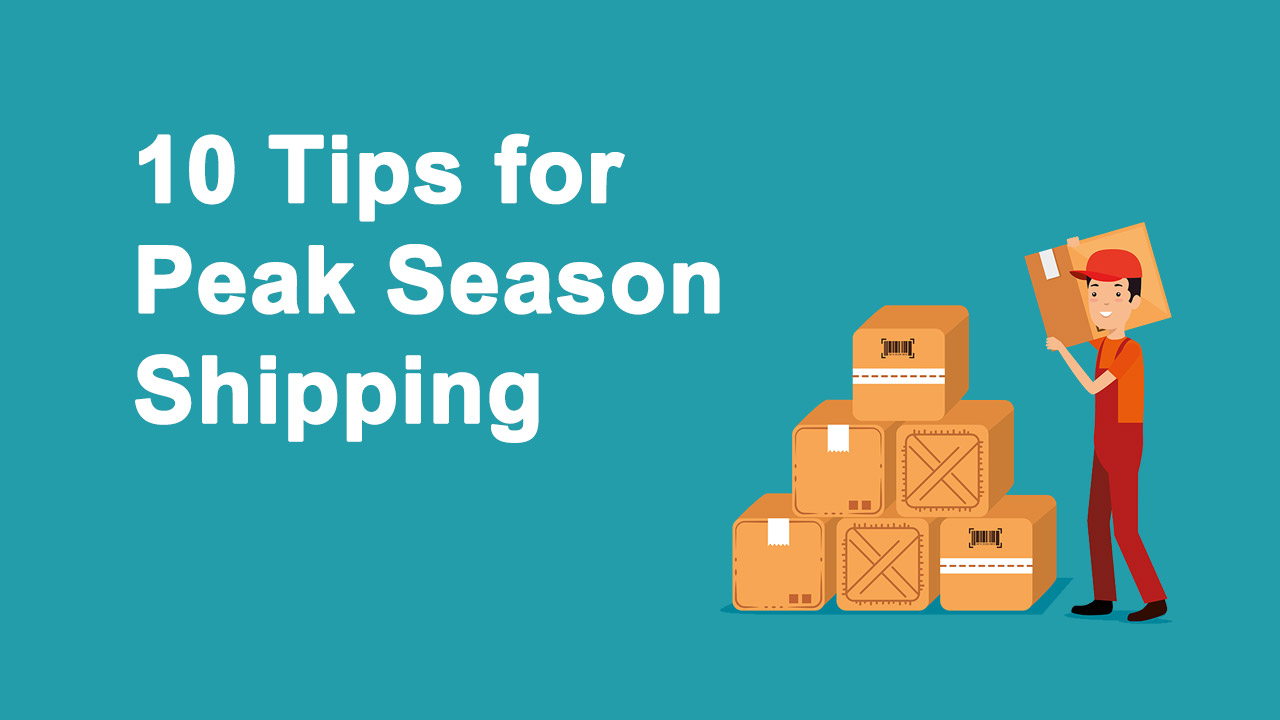For each year’s peak shipping season, businesses prepare beforehand to better handle the rising demand for products and ensure to ship them in time. Though the former target is achieved with proper planning and strategic approach, the latter often gets overlooked, disrupting everything. So, if you had gone through the same previous year and are now looking for where you can improve to avoid shipment delays, we have covered you!
In this article, we will delve deeper into the essential tips that will surely help you ship all your peak season orders in time. So, without any further ado, let’s jump right in to begin the journey of exploration!

| Table of Content |
When is Peak Season Shipping 2023?
The span from mid-August to Thanksgiving is considered the peak shipping season of every year. Right when autumn is about to bid farewell, everyone rushes toward markets for back-to-school shopping, etc. This tends to increase the demand for products significantly. So far, it’s considered to be prime time for retail season, and businesses stock up the entire year for this holiday season sales.
It’s exactly when the general retailers got to clear all of their summer season inventories and make room for the upcoming winter stocks. Though everything seems fine until now, there comes the tricky part. The freight rates reach the sky during the peak shipping season, and capacity also gets limited.
10 Tips for Peak Season Shipping
By now, you must have developed a clear understanding of the peak season, its span, and the challenges businesses have to face during it. After thorough analysis and owing to the experience of years, we have shortlisted ten of the most important tips that will help you better face the peak season shipping challenges. Let’s give them a quick read!
1. Plan Ahead
The first and foremost thing always remains planning. Grab a pen and notebook and sketch away all the steps your products go through, from the sourcing of material until they are delivered to the customer’s doorstep.
Now, analyze the time each step takes to make a considerable number of products, say 100. With this analysis, you will obtain the actual time you require to stock up for the peak season.
Next comes the shipping thing: review your shipping partners’ policies for peak season shipping and map out a plan accordingly. You can get in touch with them to get special offers or discounts on large shipments.
2. Ship Ahead
Another great idea is to ship before the peak shipping season. Yup, you read it right! As you have already obtained the stock requirement for different shipping locations, you can set up a temporary inventory there, if you don’t have any, and slowly ship your goods there. This way, you can avoid paying for the inflated rates of shipping during peak season.
3. Multiple Shipping Routes
Partnering with multiple shipping carriers to ship via different routes is also a great idea. This way, you won’t have to be dependent on a single carrier. If one gets stuck, you can rely on the inventory coming from the second route to arrive and save the day. Moreover, with diversified routes, you will get a chance to cover broad geographical areas, serving even more customers. So, why not try it?
If you are shipping beforehand, you can also opt for cheap yet safe shipping options. Instead of air shipping, go with land or sea-based ones that take longer time to reach the destination but are much cheaper.
4. Full Prepared for Holiday
Be it Black Friday, Thanksgiving, or Christmas, you must be fully prepared for everything to handle the rising number of customers. Inventory is not the only thing you should worry about. Multiple other things need consideration, from the website response time to its capacity to handle traffic, your marketing strategy, proper exchange and return policies, and loads more.
In short, it’s when you need to overview your entire business and business handling strategies so that you don’t leave a single loophole that can mess up everything in the peak shipping season.
5. Data Analysis for Peak Shipping Season
Dig into the previous years’ data and analyze how much stock you shipped to any location, what was the timing and the cost of shipping, and more. The more years of data you have, the more you will get a precise and accurate perception of the time and cost management.
Once you have compiled statistical data, you can now work on resourcing raw materials, preparing stocks, and getting in touch with your shipping partner on the expected rates and timing. Be very serious with this analysis, as it will back your success in the most unexpected way.
6. Keep Communicating with Your Customers
Staying in the loop with the customers via newsletters or any other professional means. Ensure to provide them 24/7 quick, responsive Customer Service in case they have any queries related to the products or shipping. Arranging an order tracking service for customers can be a great idea. This way, they can stay rest assured with real-time updates on their shipments.
Additionally, you must inform your customers beforehand about the shipping details, the added shipping costs, if any, and the shipping delays. All this will help win your customers’ hearts and ensure their optimal satisfaction.
7. Review your Return Policy
Returns are more common in the holiday seasons. So, review your return policy and make sure it facilitates your customers in all possible ways. Moreover, your return policy should be clear and concise, avoiding wordy descriptions. Figure out the entire return process, like whether the customer will ship back or the shipping partner will take it back.
Besides this, your Customer Support should be trained well to deal with any issues and be well informed about the changes in policies, if any. Being on the same page will help give better responses to the customers; otherwise, they will surely fed up, leaving bad reviews.
8. Stay on Top of Your Deadlines
Missing your shipping deadline is the worst thing that you can do in the peak shipping season. Not only will it delay the delivery of your goods to the customers, but also you will end up paying overly for the timely shipping to avoid customer dissatisfaction. You can set reminder alerts on your calendar to avoid this issue.
9. Action Now
Never ever procrastinate in any issue faced in business dealings, either with vendors, shippers, or even customers. Procrastination is the worst hurdle in developing mutual understanding between both ends and sorting out the issue. So, stay active and resolve any issue as quickly as possible to prevent them from intensifying.
10. Work with a 3PL
Last but not least, if you are afraid of being carried away by the hassle of the peak season shipment, rely on a 3PL service. This service provider takes off everything from packaging to shipping and sometimes inventory, too.
Get Custom Solutions
Wondering which 3PL service should you choose? We suggest getting your hands on the NextSmartShip (NSS). The platform is working with the aim to make things easier for their clients by offering dedicated and cost-effective services.
Whether you own a full-fledged business or a small one, partnering with NSS can prove a game-changer for you. For more information and quotes, please refer to their official website.
Wrapping It Up!
Peak season shipping comes with a lot of hassle due to customer traffic and more orders than you would ever receive in any other span of the year. However, the ideal business approach is to prepare beforehand for the surge, both in terms of inventory and shipping.
The above-mentioned tips will surely help you avoid any shipment issues or delays during the season. Hope you found this info worth reading; stay tuned for more! Ensure to check out NSS if you are into partnering with a 3PL service.




